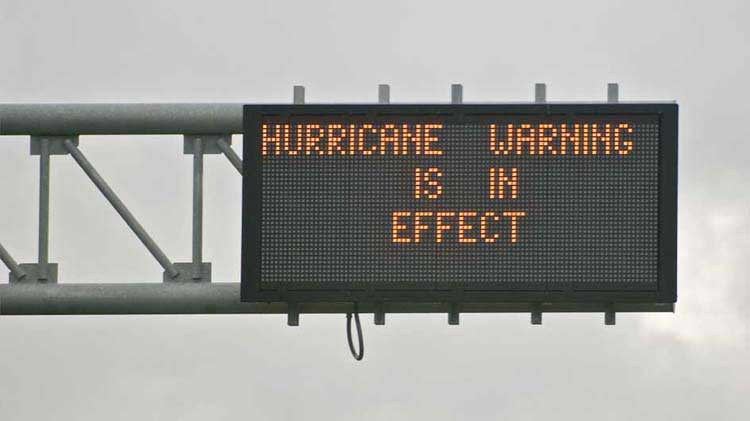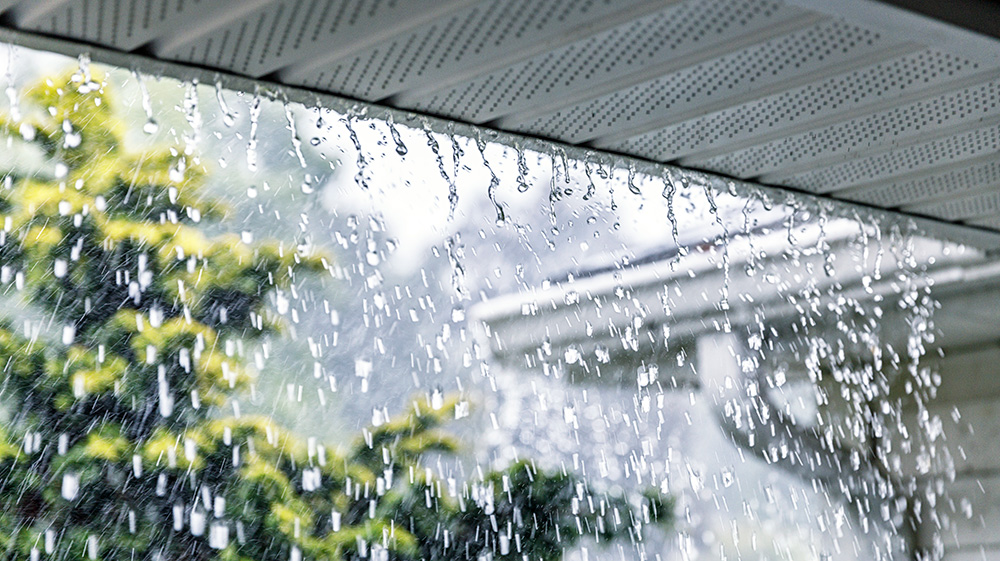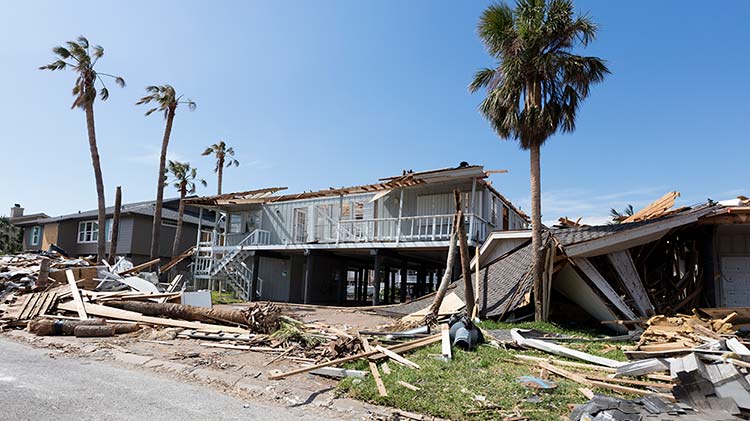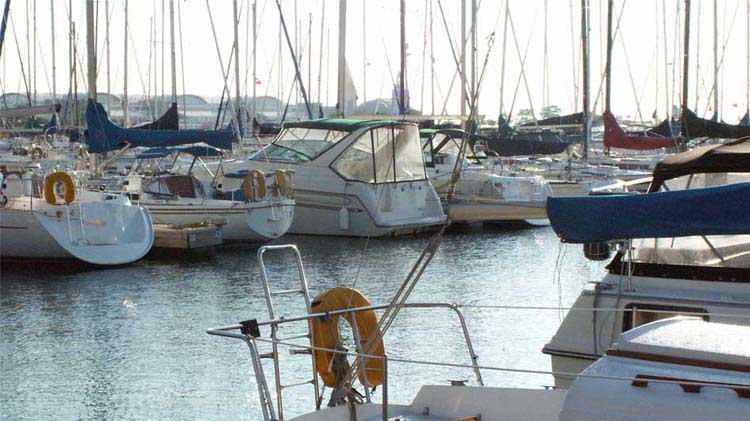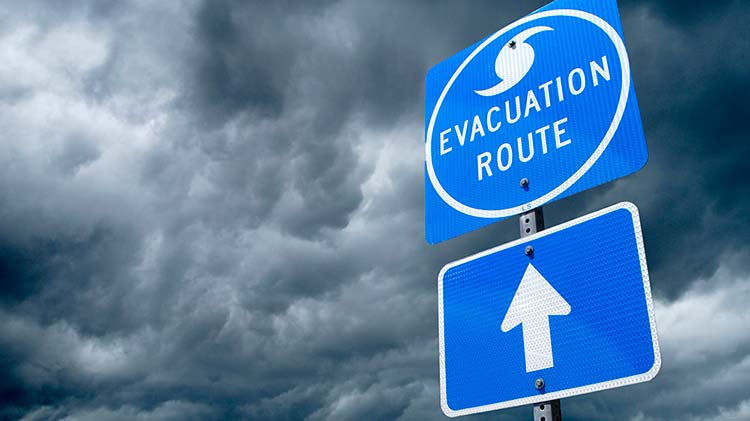Hurricane evacuation and preparedness plan
When a hurricane requires evacuation, here's what you can do to help protect your home, pets and property.
When a hurricane warning is given, will you be ready? By making a hurricane evacuation plan – including putting together an evacuation kit and other planning – you can help keep you, your family and your pets safe. In addition, having your home prepared for a hurricane as a part of your hurricane preparedness plan might help protect the property you leave behind. And don’t forget about boats or RVs. Both may need securing, emergency kits, protection from flying debris and other attention.
Hurricane evacuation checklist
In many cases, a mandatory evacuation is declared a day or two in advance. Sometimes, though, the evacuation order can come at a moment's notice. Planning ahead for the hurricane might help improve the safety of your family and property. Consider including the following in your family evacuation plan:
- A meeting place. If your family isn't together when the evacuation order is given, plan a meeting place to reconnect. This could be a church, school or even a location in a nearby town. Also be aware of the disaster plans of your workplace and children's schools and how they might work with your meeting place.
- A designated out-of-state friend or relative as a family contact. This person can help update everyone in case your family is separated.
- Emergency cards. These cards can have the meeting places in priority order along with important phone numbers and addresses, including that of your designated contact.
- An identified shelter or safe area for your location. Let friends and relatives know the shelter's location in advance.
- Evacuation routes. The first route to your public evacuation shelter should be the fastest routes from your home, workplace or meeting location, but consider some alternate routes as well. Flooding, downed trees and washed-out bridges might cause you to change your evacuation route.
- Care for your pets. Some public shelters might not allow pets. Review your city or county's evacuation plan to learn what local agencies or facilities might be able to house your pet during a hurricane.
- Car safety. Check that your gas tanks are full (in case the power goes out and pumps are not working) and have a hurricane evacuation kit ready to go in your vehicle.
- Time-to-go bags. Identify who will grab the necessary bags and lock all the doors and windows.
Packing your evacuation kit
Once assembled, remember to update your kit once a year based on your family's changing needs. And keep the kit in a convenient place known to your whole family.
A hurricane "go" bag
Have a backpack, duffle bag or small suitcase with the essentials to help survive a few days away from home. Consider including the following items in your kit:
- A change of clothes for a couple of days
- Copies of important documents like your insurance policies, the deed to your house and any necessary identification cards for each person
- Waterproof, battery-powered or hand-crank-powered flashlights and radios (with replacement batteries) — a radio will help you stay tuned into local weather advisories
- A supply of prescription medication along with medical records for each person — check with your physician or pharmacist about whether you can store your medications with your survival kit and the best way to do so
- Some cash – ATMs and credit card machines might not be working
- An extra set of keys for your house and car
- Extra chargers for your phone
- A copy of your evacuation plan
- Water, food and medications — at least a 10-day supply
- Veterinary records and proof of vaccinations
A hurricane emergency car kit
Place items in airtight plastic bags and store them in an easy-to-carry container, such as a plastic storage container with a lid, or a duffle bag. Consider the following items for your kit:
- Drinkable water — 1 gallon per person, per day
- Sealed, prepared meals — at least a 10-day supply for each person — remember to change the water and food supply every six months
- A first aid kit and any extra supplies for medical conditions
- A few blankets
- A phone charger for the car
- A whistle or other sound-signaling device
- Local and regional road maps
- A multi-tool with a knife
- Toiletries including garbage bags, toilet paper and paper towels
- Waterproof bags or containers
- A gas can
- Jumper cables
- A towline
What if we get split up?
Decide in advance on two different meeting points in case your family or group gets split up. Your first meeting place may be made inaccessible by the storm, so it's important to have a backup meeting location.
Should we stop anywhere if we evacuate?
Once you're packed and on the road, try not to stop unless traffic necessitates it. Stopping for food or drinks could significantly slow your evacuation.
Should we evacuate or stay?
Officials in your area or state may issue orders to evacuate or stay, depending on weather and traffic conditions.
Evacuation orders: There are two types of evacuation orders: voluntary and mandatory. Both employ an evacuation formula that helps officials decide what areas and populations should leave first. This is usually those most susceptible to flooding and severe damage.
- Mandatory – If this type of evacuation order is issued, you must, by law, leave. Use only those roads identified as evacuation routes, even if they are heavily trafficked. Other routes may be closed, and you could be forced to turn around, losing valuable time.
Order to stay: It's possible officials may determine it's safer to remain in your home if leaving could lead to gridlock and danger for people to be trapped in their vehicles. If you are weathering the storm at home, check out these hurricane safety tips.
Did you know these hurricane facts?
- The official Atlantic hurricane season is from June through November.
- September is the most common month for hurricanes.
- Katrina was the costliest U.S. hurricane to date, causing $125 billion in damage back in 2005 (With an adjusted cost of $193.8 billion as of July of 2023).
Can I get hurricane insurance?
Check with your insurer to determine if your house, condominium, or rental property is protected in the event of a hurricane. This could include damage sustained due to wind and rain caused by the effects of the hurricane. If your home is in an area of higher hurricane risk, you could encounter a deductible established solely for hurricanes.
A State Farm homeowner's insurance policy does not cover flood insurance. Flood insurance coverage may be purchased through the federal government's National Flood Insurance Program. If you live in an area prone to hurricanes or flooding, talk to your insurance agent about flood insurance and know what's covered.
With some preparation, you may be better able to manage the next hurricane evacuation order. And after the storm, before you start any clean up from the hurricane on your property, contact your insurance agent with any reports of damage.
